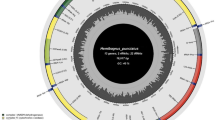Abstract
A cryptic lineage of hammerhead shark closely related to but evolutionarily distinct from the scalloped hammerhead (Sphyrna lewini) was recently documented in the western North Atlantic Ocean. Here, we demonstrate using nuclear and mitochondrial DNA sequences that this cryptic lineage also occurs in the western South Atlantic Ocean, extending its distribution >7,000 km from its only previously reported location. Our results also further validate the existence of this evolutionarily distinct hammerhead shark lineage. The southern hemisphere cryptic individuals were 1.6 and 5.8% divergent from S. lewini (sensu stricto) for the nuclear internal transcribed spacer 2 (ITS2) and mitochondrial control region loci, respectively, and formed a strongly supported, reciprocally monophyletic sister group to sympatric S. lewini. Coalescent analysis (ITS2 locus) yielded a divergence estimate of ~4.5 million years between S. lewini and the cryptic lineage. Given expanding concerns about overfishing of the large-bodied hammerhead sharks, this cryptic lineage needs to be formally recognized and incorporated into shark management and conservation planning to avoid the inadvertent, potential extirpation of a unique hammerhead lineage.


Similar content being viewed by others
References
Abercrombie DL, Clarke SC, Shivji MS (2005) Global-scale genetic identification of hammerhead sharks: application to assessment of the international fin trade and law enforcement. Cons Gen 6:775–788
Baum J, Clarke S, Domingo A, Ducrocq M, Lamónaca AF, Gaibor N, Graham R, Jorgensen S, Kotas JE, Medina E, Martínez-Ortíz J, di Sitizano JMT, Morales MR, Navarro SS, Pérez JC, Ruiz C, Smith W, Valenti SV, Vooren CM (2007) Sphyrna lewini. In: IUCN 2011. IUCN Red List of Threatened Species. Version 2010.4. www.iucnredlist.org. Downloaded on 7 Apr 2011
Bickford D, Lohman DJ, Sodhi NS, Nig PKL, Meier R, Winker K, Ingram KK, Das I (2007) Cryptic species as a window on diversity and conservation. Trends Ecol Evol 22:148–155
Cappetta H (1987) Chondrichthyes II. Mesozoic and Cenozoic Elasmobranchii. In: Schultze HP (ed) Handbook of paleoichthyologie, vol 3b. Gustav Fischer Verleg, Stuttgart, p 193
Casper BM, Domingo A, Gaibor N, Heupel MR, Kotas E, Lamónaca AF, Pérez-Jimenez JC, Simpfendorfer C, Smith WD, Stevens JD, Soldo A, Vooren CM (2005) Sphyrna zygaena. In: IUCN 2011. IUCN Red List of Threatened Species. Version 2010.4. www.iucnredlist.org. Downloaded on 26 Apr 2011
Chapman DD, Pinhal D, Shivji MS (2009) Tracking the fin trade: genetic stock identification in western Atlantic scalloped hammerhead sharks Sphyrna lewini. Endang Species Res 9:221–228
Denham J, Stevens J, Simpfendorfer CA, Heupel MR, Cliff G, Morgan A, Graham R, Ducrocq M, Dulvy ND, Seisay M, Asber M, Valenti SV, Litvinov F, Martins P, Lemine Ould Sidi M, Tous P, Bucal D (2007) Sphyrna mokarran. In: IUCN 2011. IUCN Red List of Threatened Species. Version 2010.4. www.iucnredlist.org. Downloaded on 26 Apr 2011
Drummond AJ, Rambaut A (2007) BEAST: Bayesian evolutionary analysis by sampling trees. BMC Evol Biol 7:214
Duncan KM, Martin AP, Bowen BW, de Couet DH (2006) Global phylogeography of the scalloped hammerhead shark (Sphyrna lewini). Mol Ecol 15:2239–2251
Edgar RC (2004) Muscle: multiple sequence alignment with high accuracy and high throughput. Nucleic Acids Res 32(5):1792–1797
Felsenstein J (1985) Confidence limits on phylogenies: an approach using the bootstrap. Evolution 39:783–791
Hall TA (1999) BioEdit: a user-friendly biological sequence alignment editor and analysis program for Windows 95/98/NT. Nucleic Acids Symp Ser 41:95–98
Hayes CG, Jiao Y, Cortés E (2009) Stock assessment of scalloped hammerheads in the western North Atlantic ocean and Gulf of Mexico. N Am J Fish Manag 29:1406–1417
Huelsenbeck JP, Ronquist F, Nielsen R, Bollback JP (2001) Bayesian inference of phylogeny and its impact of evolutionary biology. Science 294:2310–2314
Lim DD, Motta P, Mara K, Martin AP (2010) Phylogeny of hammerhead sharks (Family Sphyrnidae) inferred from mitochondrial and nuclear genes. Mol Phylogenet Evol 55(2):572–579
Nance HA, Klimley P, Galván-Magaña F, Martínez-Ortíz, Marko PB (2011) Demographic processes underlying subtle patterns of population structure in the scalloped hammerhead shark, Sphyrna lewini. PLoS ONE 6(7):e21459. doi:10.1371/journal.pone.0021459
Ovenden JR, Kashiwagi T, Broderick D, Giles J, Salini J (2009) The extent of population genetic subdivision differs among four co-distributed shark species in the Indo-Australian archipelago. BMC Evol Biol 9:40
Ovenden JR, Morgan JAT, Street R, Tobin A, Simpfendorfer C, Macbeth W, Welch D (2011) Negligible evidence for regional genetic population structure for two shark species Rhizoprionodon acutus (Rüppell, 1837) and Sphyrna lewini (Griffith & Smith, 1834) with contrasting biology. Mar Biol 158:1497–1509
Pank M, Stanhope M, Natanson L, Kohler N, Shivji M (2001) Rapid and simultaneous identification of body parts from the morphologically similar sharks Carcharhinus obscurus and Carcharhinus plumbeus (Carcharhinidae) using multiplex PCR. Mar Biotechnol 3:231–240
Portnoy D, McDowell J, Heist E, Musick J, Graves J (2010) World phylogeography and male-mediated gene flow in the sandbar shark, Carcharhinus plumbeus. Mol Ecol 19:1994–2010
Posada D (2008) jModelTest: phylogenetic model averaging. Mol Biol Evol 25:1253–1256
Quattro JM, Stoner DS, Driggers WB (2006) Evidence of cryptic speciation within hammerhead sharks (genus Sphyrna). Mar Biol 148:1143–1155
Rambaut A (2008) FigTree. Available via http://tree.bio.ed.ac.uk/ software/figtree/
Rambaut A, Drummond A (2007) Tracer v1.4. Available from http://beast.bio.ed.ac.uk/Tracer
Richards VP, Henning M, Witzell W, Shivji MS (2009) Species delineation and evolutionary history of the globally distributed spotted eagle ray (Aetobatus narinari). J Hered 100(3):273–283
Swofford DL (2002) PAUP* phylogenetic analysis using parsimony (*and other methods). Version 4b10. Sinauer, Sunderland
Villesen P (2007) FaBox: an online toolbox for fasta sequences. Mol Ecol Notes 7(6):965–968
Acknowledgments
This work was supported by grants to DP and CM from State of São Paulo Research Foundation (FAPESP) and grants from the Save Our Seas Foundation and Hai Stiftung and operational support from the Guy Harvey Research Institute to MSS. We thank D. Sodré, C. Testerman, R. Horn and A. Bernard for their advice regarding laboratory work.
Author information
Authors and Affiliations
Corresponding author
Additional information
Communicated by T. Reusch.
Rights and permissions
About this article
Cite this article
Pinhal, D., Shivji, M.S., Vallinoto, M. et al. Cryptic hammerhead shark lineage occurrence in the western South Atlantic revealed by DNA analysis. Mar Biol 159, 829–836 (2012). https://doi.org/10.1007/s00227-011-1858-5
Received:
Accepted:
Published:
Issue Date:
DOI: https://doi.org/10.1007/s00227-011-1858-5




